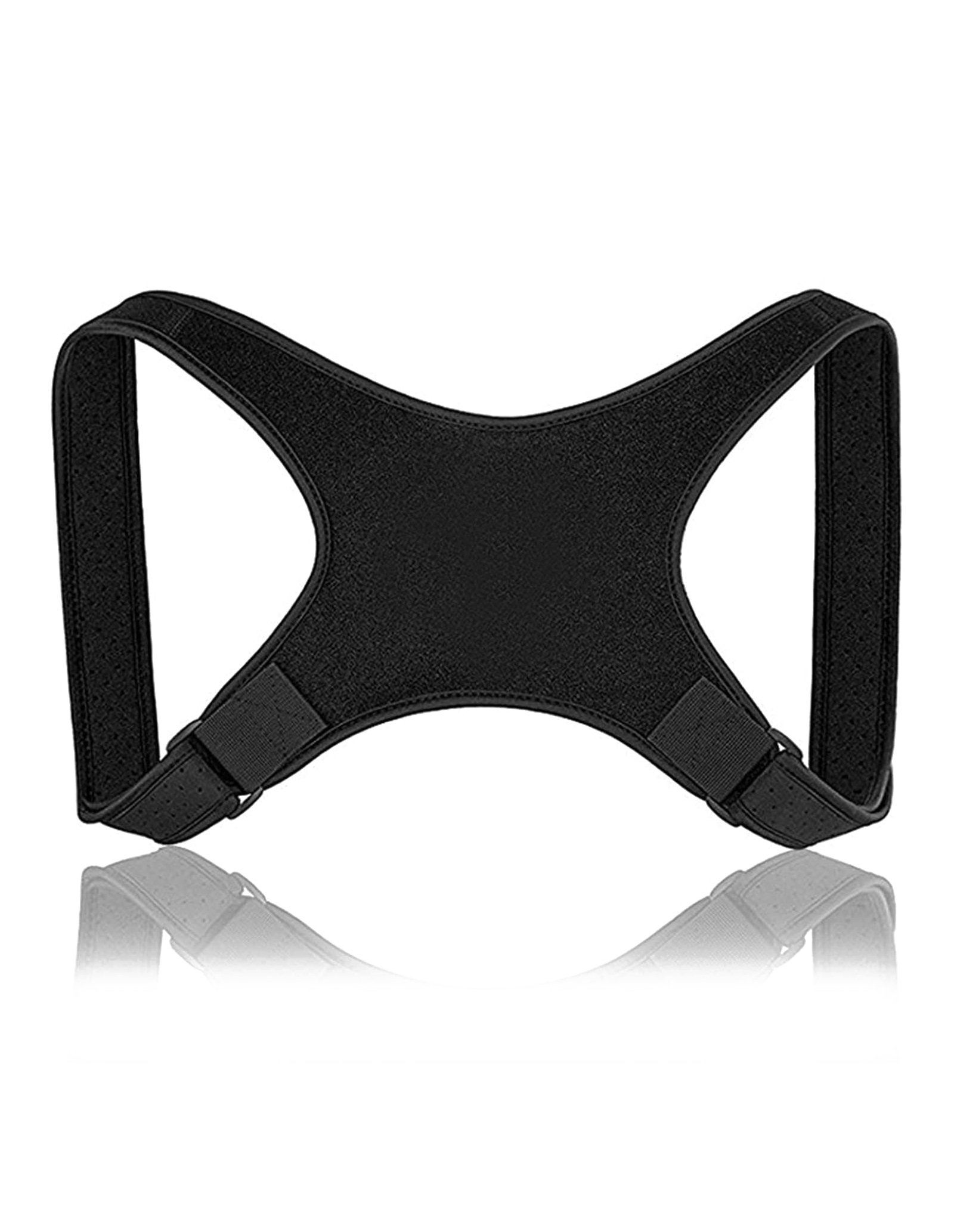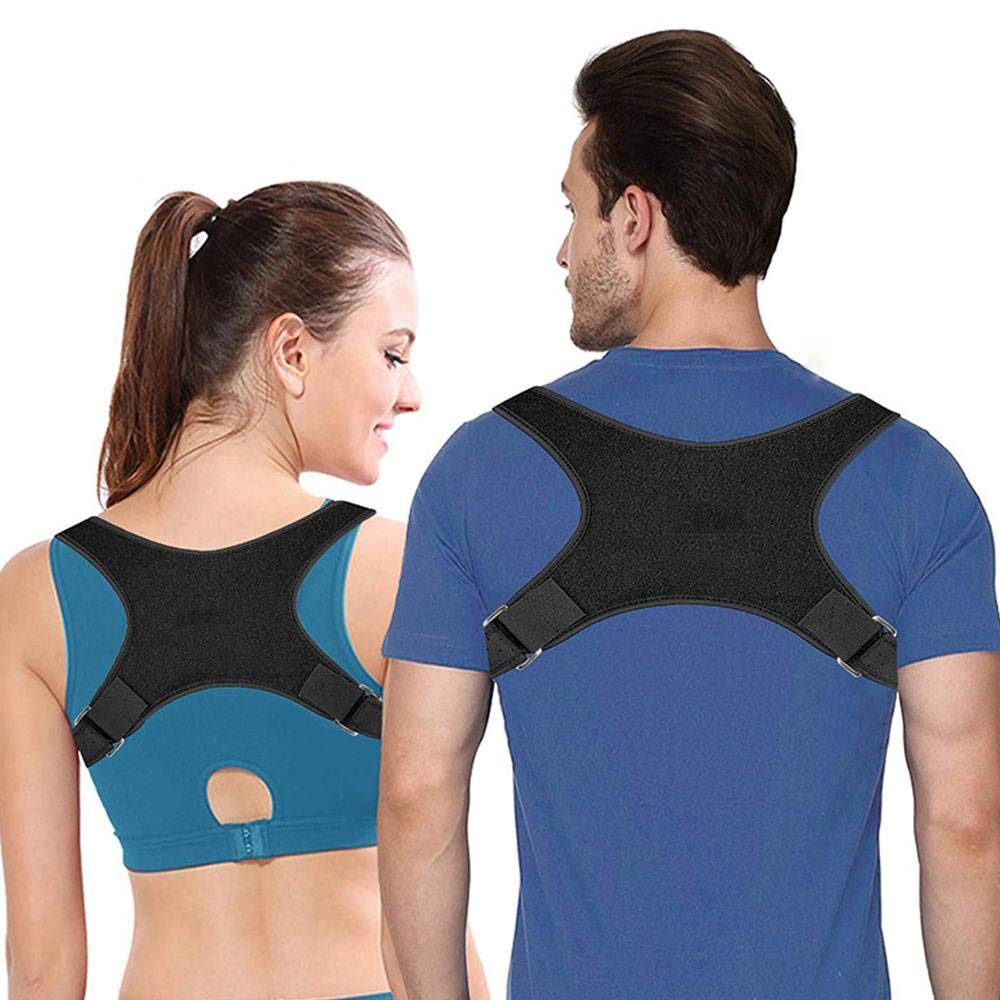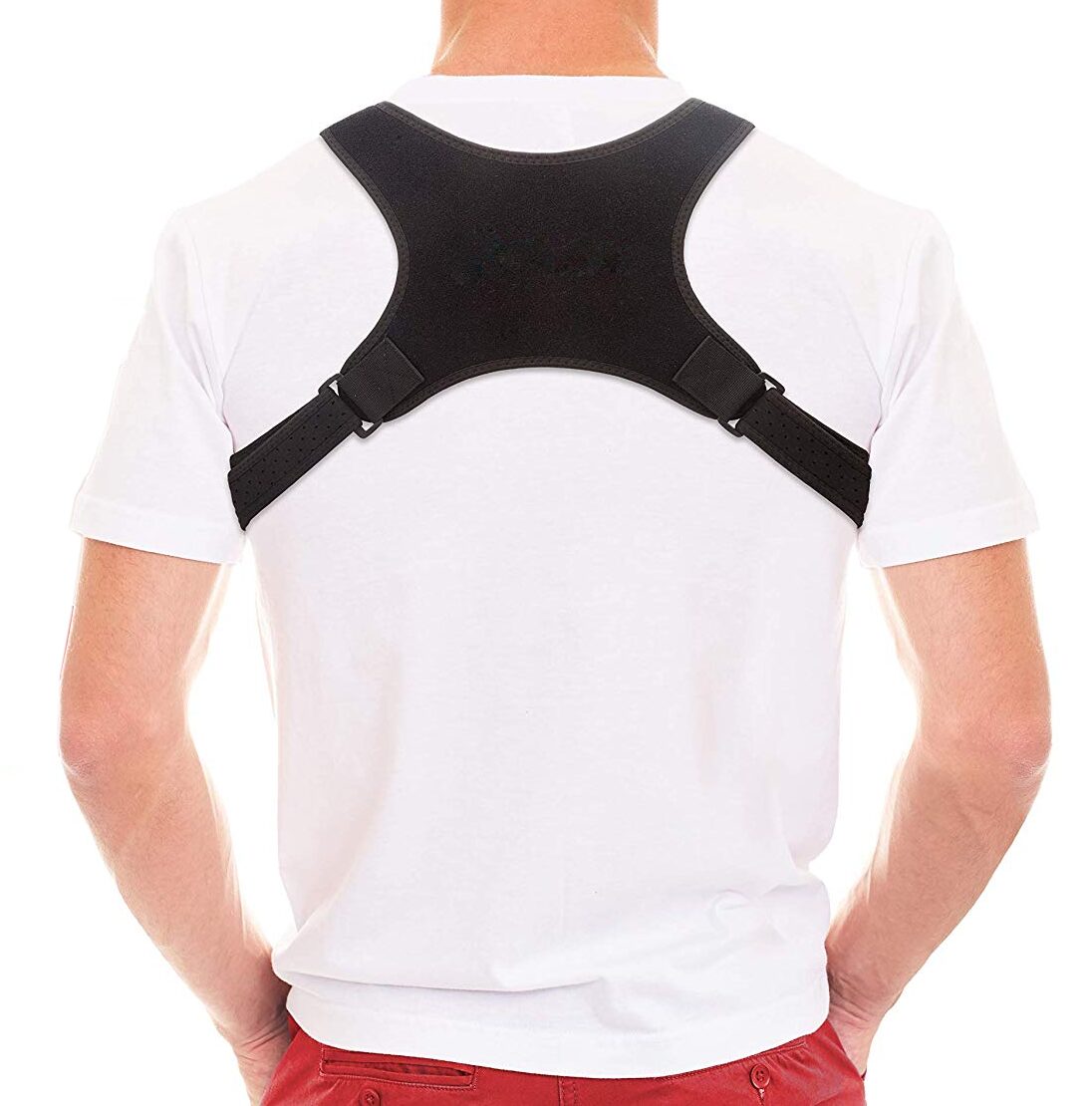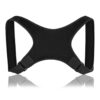No products in the cart.
Upper Back Support
£12.99inc VAT
- 1x Upper back support posture corrector for improving bad Posture and easing Shoulder, Back, and Neck Pain
- Ergonomically designed to correct posture and ease pressure off your back
- Provides compression that helps to improve circulation around your back easing pain and speeding up recover of back injuries
- Ideal for treating and preventing a wide range of back problems and injuries including Sprains and strains, Herniated & slipped discs & Fractured vertebrae
- Suitable for Men, Women and Children
- Made from strong yet lightweight neoprene material
- One size fits all – Easy to adjust and use with a secure Velcro strap and sturdy adjustable side buckles to find the right fit for you
- Breathable holes helps better circulate air around your back keeping you feeling fresh and sweat free
- The Non bulky and discreet design makes this posture corrector ideal for wearing comfortably underneath regular clothing
- Includes a full 30 day money back guarantee if you are not 100% satisfied with your purchase!
2 Reviews For This Product
Fast & Secure Checkout Through Paypal
Pay with Paypal the secure payment gateway that accepts all credit and debit cards. Paypal is free and secure and no credit or bank information is ever stored or shared with us.
Fast Dispatch
Enjoy your items soon with quick dispatch via Royal Mail First Class. Expect to have your items between 1-3 days for domestic orders. 7-10 Working days for international orders.
Return Policy – 30 Day Money Back Guarantee
We are so confident that you will just love our product that we offer a full 30 day money back guarantee. In the unlikely event, you are unhappy with your purchase you can simply return it within 30 days for a refund. Please contact us via the form on the contact us page to start your return.
To return an item please send it to: Nuova Health UK, 81 Highfield Lane, Waverley, Rotherham, S60 8AL. Please include a note with your order id so we know who to refund. Please retain your postage receipt as proof of postage. All that we ask is that the item is in the original packaging and unused.




by Martin
Works great and very comfortable to wear 🙂
by Maria
For my work I spend countless hours glued to my chair, slouching in front of my computer. Gradually, the constant slouching started causing me real pain and discomfort… so, i decided it was high time I did something about it. That’s when I found this posture corrector. This thing is easy to wear and extremely comfortable. It fits snugly, almost like a gentle, constant reminder to sit up straight. The design is so discreet, it’s practically invisible under my clothes, which is a big plus. In the beginning, I wore it for a couple minutes each day, gradually increasing the duration. It’s been a few weeks now, and I find myself maintaining a good posture even without it. I can’t believe how much of a difference it has made to my posture and subsequently, the nagging pain! The thing I love the most is that it’s not restrictive, doesn’t interfere with my movements at all. I can go about my day, running errands, doing chores, with it on. I would recommend it to anyone who, like me, sits for long hours. A good posture goes a long way in ensuring a healthy back and this little device has certainly helped me in achieving that.